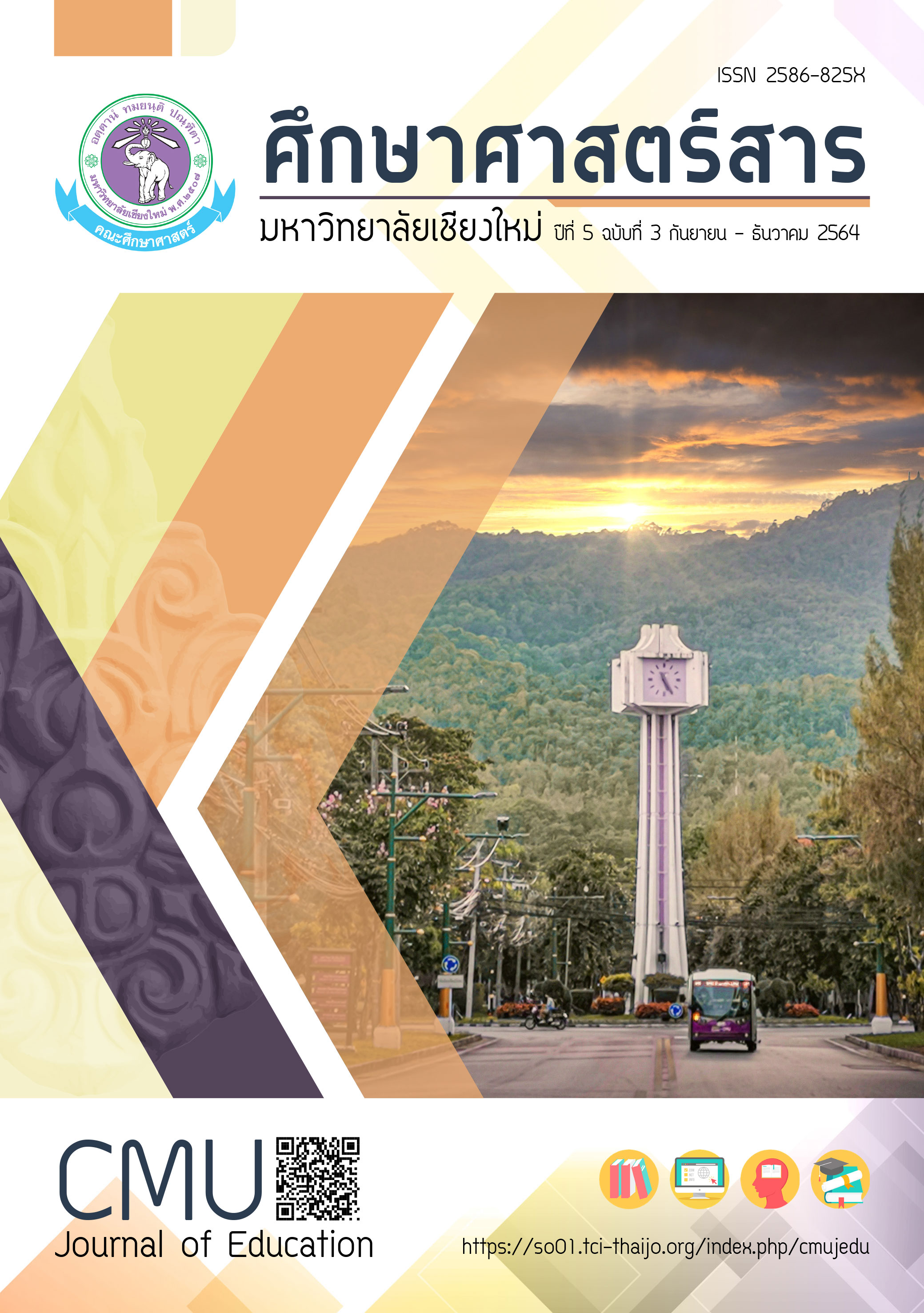ภาวะหมดไฟทางการเรียนของนิสิตแพทย์ชั้นปีที่ 4 มหาวิทยาลัยนเรศวร
Main Article Content
บทคัดย่อ
การศึกษานี้มีวัตถุประสงค์เพื่อศึกษาระดับภาวะหมดไฟทางการเรียนของนิสิตแพทย์ชั้นปีที่ 4 และศึกษาความแตกต่างของระดับภาวะหมดไฟ ระหว่างนิสิตแพทย์โครงการ New track และนิสิตแพทย์โครงการปกติ เป็นการศึกษาเชิงพรรณนา ประชากรที่ใช้ในการศึกษาคือ นิสิตแพทย์ชั้นปีที่ 4 มหาวิทยาลัยนเรศวร ปีการศึกษา 2562 จำนวน 170 คน เครื่องมือที่ใช้ในการวิจัยคือ แบบสอบถามออนไลน์ แบ่งออกเป็น 2 ส่วน ได้แก่ ข้อมูลส่วนบุคคลและแบบสอบถามระดับภาวะหมดไฟ แบ่งออกเป็น 3 ด้าน คือ ด้านความอ่อนล้าทางอารมณ์ ด้านการลดความเป็นบุคคล และด้านความสำเร็จส่วนบุคคลลดลง สถิติที่ใช้ คือ Chi-Square Test of Homogeneity วิเคราะห์ข้อมูลด้วยจำนวนและร้อยละ ผลการศึกษาพบว่า นิสิตแพทย์ชั้นปีที่ 4 มีระดับภาวะหมดไฟ ดังนี้ (1) ด้านความอ่อนล้าทางอารมณ์ ส่วนใหญ่อยู่ในระดับต่ำ (2) ด้านการลดความเป็นบุคคล ส่วนใหญ่อยู่ในระดับปานกลาง และ (3) ความสำเร็จส่วนบุคคลลดลง ส่วนใหญ่อยู่ในระดับต่ำ เมื่อทดสอบความแตกต่างของระดับภาวะหมดไฟ ระหว่างนิสิตแพทย์โครงการ New track และนิสิตแพทย์โครงการปกติพบว่า ระดับภาวะหมดไฟ ด้านความอ่อนล้าทางอารมณ์ และด้านการลดความเป็นบุคคลของนิสิตทั้งสองกลุ่ม มีความแตกต่างอย่างมีนัยสำคัญทางสถิติ
Article Details

อนุญาตภายใต้เงื่อนไข Creative Commons Attribution-NonCommercial-NoDerivatives 4.0 International License.
หากผู้เสนอบทความมีความจำเป็นเร่งด่วนในการตีพิมพ์โปรดส่งลงตีพิมพ์ในวารสารฉบับอื่นแทน โดยกองบรรณาธิการจะไม่รับบทความหากผู้เสนอบทความไม่ปฏิบัติตามเงื่อนไขและขั้นตอนที่กำหนดอย่างเคร่งครัด ข้อมูลของเนื้อหาในบทความถือเป็นลิขสิทธิ์ของ Journal of Inclusive and Innovative Education คณะศึกษาศาสตร์ มหาวิทยาลัยเชียงใหม่
เอกสารอ้างอิง
ชัยยุทธ กลีบบัว. (2552). การพัฒนาโมเดลเชิงสาเหตุของความเหนื่อยหน่ายในการทำงาน (วิทยานิพนธ์ศิลปศาสตรมหาบัณฑิต).
สาขาจิตวิทยาอุตสาหกรรมและองค์การ คณะจิตวิทยา จุฬาลงกรณ์มหาวิทยาลัย.
Altannir, Y., Alnajjar, W., Ahmad, S. O., Altannir, M., Yousuf, F., Obeidat, A. and Al-tannir, M. (2019). Assessment of burnout in medical undergraduate students in Riyadh, Saudi Arabia. BMC Medical Education, 19(1), 1-8.
Colby, L., Mareka, M., Pillay, S., Staden, C. V., Plessis, E. D., Joubert, G. (2018). The association between the levels of burnout and quality of life among fourth-year medical students at the University of the Free State. South African Journal of Psychiatry, 24(2), 1-6.
Dyrbye, L. N., West, C. P., Sate, D., Boone, S., Tan, L., Sloan, J. and et al. (2014). Burnout among U.S. medical students, residents, and early career physicians relative to the general U.S. population. Academic Medicine, 89(3), 443–451.
Ishak, W., Lederer, S., Mandili, C., Nikravesh, R., Seligman, L., Vasa, M. and et al. (2009). Burnout during residency training: a literature review. Journal of Graduate Medical Education, 1, 236-242.
Ishak, W., Nikravesh, R., Lederer, S., Perry, R., Ogunyemi, D. and Bernstein, C. (2013). Burnout in medical students: a systematic review. Clin Teach, 10, 242-245.
Lerthattasilp, T. (2011). Burnout among psychiatrists in Thailand: national survey. Journal of the Psychiatric Association of Thailand, 56(4), 437-448.
Mahfouz, M. S., Ali, S.A., Alqahtani, H. A., Kubaisi, A. A., Ashiri, N. M., Daghriri, E. H., and Alzahrani, S. A. (2020). Burnout and its associated factors among medical students of Jazan University, Jazan, Saudi Arabia (Research report). Saudi Arabia: Emerald Publishing Limited.
Maslach, C., Schaufeli, W. B. and Leiter, M. P. (2001). Job burnout. Annual Review of Psychology, 52, 397-422.
Pholchan, T. and Chuangchum, P. (2018).The life purposes and searching for meaning of life in the third year medical students, Naresuan University. Thammasat Medical Journal, 4, 636-643.
Sereesitthipitak, V. (2007). Burnout: definition, inventory, prevention and intervention. Journal of Somdet Chaopraya Institute of Psychiatry, 1(1), 121-130.
Srikam, S., Jiamjarasrangsi, W., and Lalitanantpong, D. (2014). Job burnout and related factors among residents of King Chulalongkorn Memorial Hospital. J Psychiatr Assoc Thailand, 2, 139-150.
West, C. P., Dyrbye, L. N., Erwin, P. J. and Shanafelt, T. D. (2016). Interventions to prevent and reduce physician burnout: a systematic review and meta-analysis. Lancet, 388, 2272-2281.
Wood, B. D. and Killion, J. B. (2007). Burnout among healthcare professionals. Radiology Manage, 29, 30-38.


